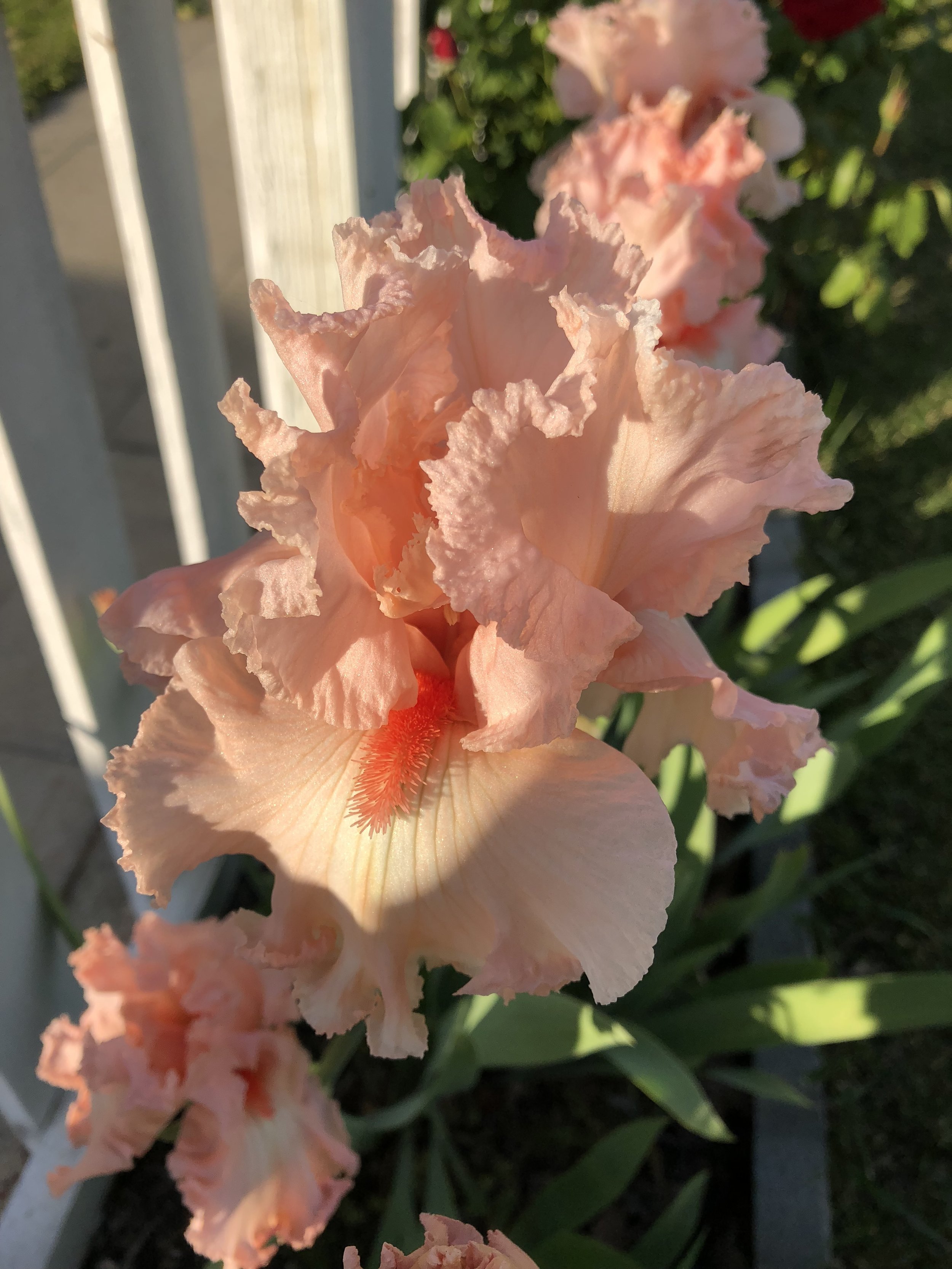Planting is easy, just dig, drop & done!
No matter the size of your garden, there’s always a place to plant bulbs! (Don’t forget, they do great in pots!) After a long winter, there’s nothing like having your garden bursting with spring color! It’s the prettiest effect to plant bulbs in masses, a sea of purple iris or cheerful daffodils.
As far as planting time, as long as you put your bulbs in before Thanksgiving, you'll have spring bloomers. We don't foresee another heat wave so now thru mid-November is a great time to get them into the ground! When storing bulbs, keep them in a paper bag in a cool environment until planting time.
Bearded irises need the most time in the ground to get their root system developed and established. As far as planting time, the earlier the better! For those of you with Iris' already in the ground, it's time to divide them and other dormant or spent blooming bulbs! Dividing keeps them from overcrowding and ensures the most flowers come spring!
PLANTING DEPTH
Ensure that your soil has good drainage, bulbs don’t like to be standing in water. We recommend loosen the soil before planting and work in either our Eureka Planting Mix or Master's Pro-Potting Soil for containers.
A general rule of thumb for planting depth is twice the height of the bulb. Plant large bulbs an average of 5 inches apart and small bulbs roughly 2 to 3 inches apart, pointy side up. For Fritillarias, because of their size and shape, plant them on their sides to keep them from collecting water and rotting. Mother Nature will take care of the rest!
FERTILIZER
Before placing the bulbs fertilize with E.B. Stone Organics Bulb Food 4-6-4, adding an amount in each hole dug underneath the bulb. And don’t forget your bulbs from last year as well, this will help to maximize flower production for another year of stunners! Both fertilizers contain bone meal but for the old-fashioned gardeners out there, we have Master Nursery’s Bone Meal 1-15-0 in stock. High in phosphorus, bone meal is great for strengthening roots and stems on not only your bulbs, but sweet peas and bareroot too!
Cover bulbs level with the surrounding soil. Don’t “hill up” over the bulb or leave a sinkhole for a water pocket to form. After planting, water in your bulbs. A thorough watering encourages deep root growth and the sooner the roots develop, the faster your bulbs can tolerate cold and frost.
Certain bulbs, when flower and leaf stalks emerge, are a favorite snack of slugs and snails. Protect your budding bulbs with Sluggo or Sluggo Plus, both available in our shop.
BULB LASAGNA
One technique we love in our gardens and in containers is planting in layers AKA bulb lasagna. As the bulbs overlapping in flowering time, you’ll have a constant stream of blooming beauties. Choose late bloomers like tulips for the lowest layer and muscari, daffodils and other mid-season blooms for the middle. For the top, plant earlier flowering bulbs like crocuses and irises.
We’re really excited about our new and unusual bearded iris rhizomes that have just arrived from Holland. 'Attention Please' might just take the cake for the name alone! For specific instructions on planting bearded iris, check out our Gro-Sheet.




